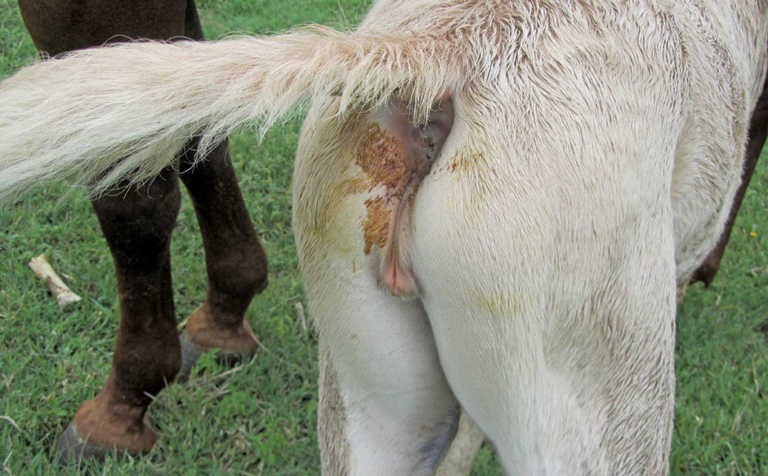
Photo: Dr Mac
The meconium is the black, sticky intestinal contents found in newborn foals. It consists of dead cells, amniotic fluid, bile and intestinal secretions accumulated while the foetus is still in the mare’s uterus.
READ Controlling worms in horses
Once the foal starts suckling, usually within three to four hours after birth, the meconium is expelled and replaced by bright yellow faeces.
If it hasn’t been expelled within six to 12 hours after the birth, the foal will show symptoms of colic, and become lethargic and stop suckling. It will also begin lifting its tail and straining. The symptoms of colic will include the foal stretching out its legs, kicking at its stomach or rolling.
The foal may also repeatedly stand up and lie down, and be reluctant to suckle.
Several neonatal diseases can lead to meconium retention. These include injuries caused by the mare stepping on or kicking the foal, dummy foal syndrome, neonatal isoerythrolysis, babesiosis, strangles, and herpes type 1. Colostrum is essential for the expulsion of meconium, as it acts as a mild laxative.
READ Protect your horse from the sun
Inadequate consumption of colostrum is usually a result of the foal refusing to suckle, or the mare not allowing her foal to suckle, which normally only occurs if it is her first foal.
Diseases and disorders
The following is an explanation of the various diseases and disorders that may lead to the foal’s inability to suckle, thus retaining meconium:
Dummy foal syndrome
This is a result of a lack of oxygen before birth, or during birth. Foals often walk around in circles and may lack the suckling reflex, even when held up to suckle from the mare.
Neonatal isoerythrolysis
This is a genetic incompatibility between the mare’s and foal’s blood, caused by the Rh-factor. Affected foals are born normal, but become anaemic and jaundiced when they drink colostrum containing maternal TALKantibodies to their blood, thus destroying the foal’s red blood cells. They stop suckling, become weaker, stagger and collapse.
Neonatal babesiosis
This typically results in a weak foal that refuses to drink, is jaundiced and may show signs of nervousness or colic.
Strangles
This is caused by Streptococcus equi. Infection prior to birth can result in a weak foal with septicaemia.
Herpes type 1
Broodmares infected with the herpes type 1 virus usually abort or give birth to weak foals that die within two to three days. The respiratory system and liver are affected, and the foal may show jaundice, be reluctant to suckle, and exhibit depression or symptoms of nervousness.
Treatment
Large stud farms often keep records of mares being mated. This allows mares heavily in-foal to be moved into larger stables when they get close to foaling. They are then monitored.
After the foal is born, it’s examined and given a human paediatric enema to prevent meconium retention.
Small-scale breeders should check that foals are suckling strongly within three hours of birth, and watch the foal for signs of straining. The faeces normally turns yellow within about six hours, indicating that the meconium has been expelled.
In suspected cases of meconium retention, use an enema. If this doesn’t work, call your veterinarian, as the foal may need to be admitted. Impacted meconium can be removed surgically, but this is not always successful.
Dr Mac is an academic, a practising equine veterinarian and a stud owner.










